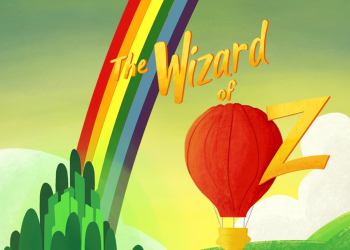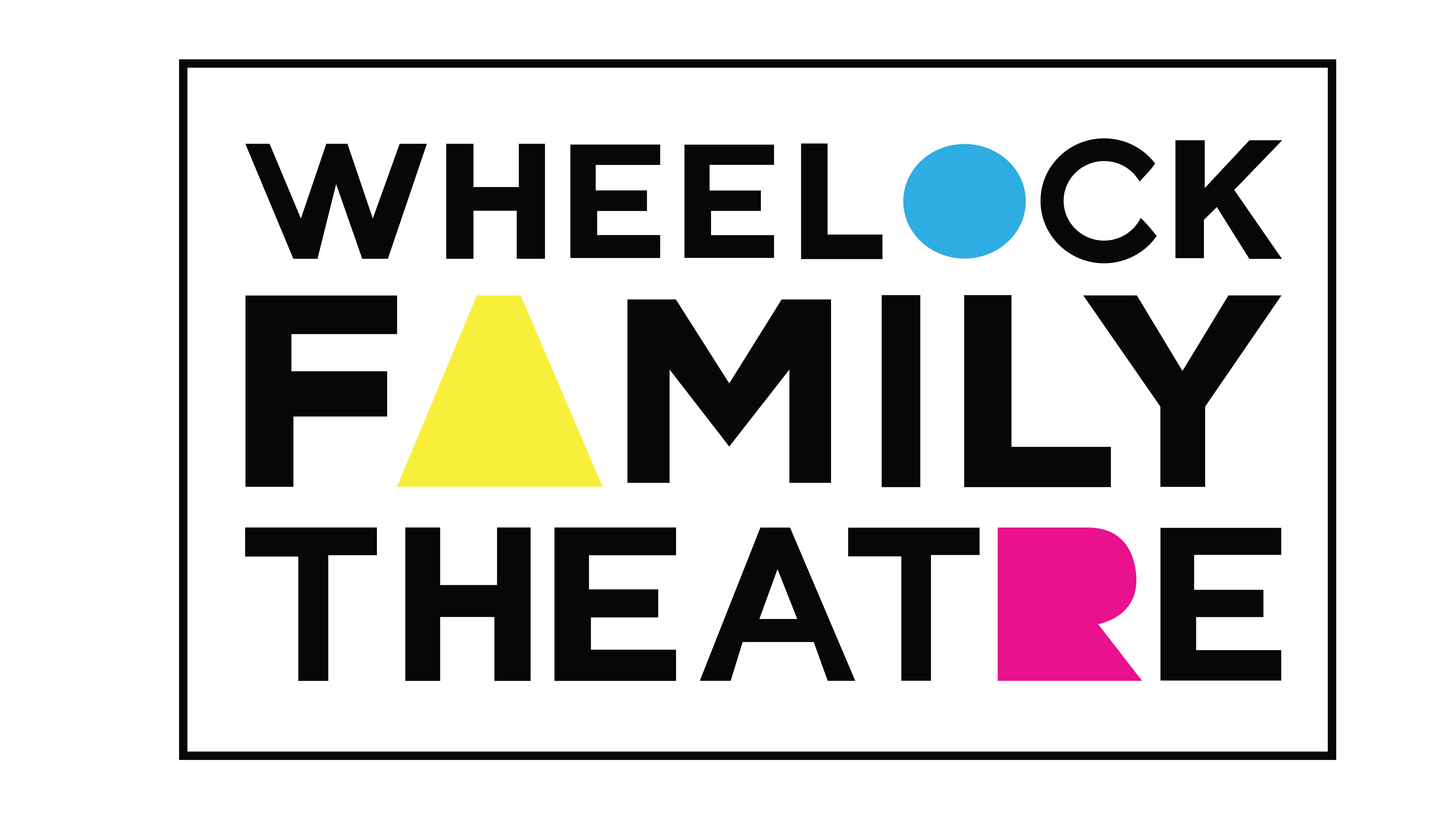DOROTHY – There’s No Place Like Home

Dorothy spends her time in Oz traveling to meet the Wizard, who is apparently the only person in Oz with the power to send her back home to Kansas. However, when the Wizard turns out to be an ordinary person and flees by balloon, Glinda tells Dorothy that she, in fact, had the power to send herself home all along. All she has to do is click her heels three times and speak the now-famous refrain: “There’s no place like home.” This section explores the importance of home as a theme in The Wizard Of Oz, asking students to embody Dorothy’s quest for home, to analyze Dorothy’s character arc from multiple perspectives, and to empathize with and activate the concept of home through personal connections with the theme.
ACTIVITY 1: Embodying ‘There’s No Place Like Home’
Begin by writing on the board Dorothy’s magic words: “There’s no place like home.”
Pose the following discussion questions:
- What is the importance of this phrase to Dorothy and to the story of The Wizard of Oz?
- What does this phrase mean to you?
- Do you agree or disagree with this phrase?
- How do you define the word ‘home’?
- Is there a difference between a ‘house’ and a ‘home’? If so, how would you describe that difference?
- Imagine that you are Dorothy describing to the Scarecrow her desire to go home. What kind of words do you imagine she would use to describe Kansas, the farm, Aunt Em and Uncle Henry? How would she convince the Scarecrow of the importance of getting back home?
Introduce students to the technique of creating tableaux, or frozen pictures constructed by each person striking and holding a pose with their body. When creating a tableaux, students should consider…
- SHAPES: what shape are they making with their body and what does this shape convey to others about their role in the tableau?
- LEVELS: when creating a tableaux with multiple people, a variety of levels such as high, medium, and low help create a dynamic and interesting picture
- EXPRESSIONS: what does their facial expression reveal about their role in the tableaux and the desired impact on an audience?
- RELATIONSHIPS: how does each person’s position in space in relationship to other people convey the theme or story?
Ask students to create a tableaux entitled “home.” How can they use their bodies to convey not only the literal idea of a home, but the concept of and the emotions surrounding home? Students can either work in small groups to prepare and present their tableau, or the class can create one tableau all together by adding in one person at a time until all participants have joined.
To extend the exercise…
- Ask the class what they notice about how classmates chose to use their bodies to convey the theme and emotions around the concept of home. What creative or impactful choices did they see their peers make?
- Create additional tableaux using the following prompts: “There’s no place like home,” “house vs. home,” “the journey home,” or “others of you or the class’ invention. What similarities and differences do you notice across these different tableaux?
-
In addition to or instead of exploring the theme through tableaux, offer students the option to respond to the theme of ‘there’s no place like home’ through…
- VISUAL ART: drawing, painting, collage, 3D sculpture
- WRITING: creative writing, poetry, persuasive writing
- SOUND: songwriting, curating a playlist, sound editing
ACTIVITY 2: Analyzing Dorothy’s Character Arc
Dorothy spends her time in Oz traveling to meet the Wizard, who is apparently the only person in Oz with the power to send her back home to Kansas. However, when the Wizard turns out to be an ordinary person and flees by balloon, Glinda tells Dorothy that she, in fact, had the power to send herself home all along. All she has to do is click her heels three times and speak the now-famous refrain: “There’s no place like home.” This section explores the importance of home as a theme in The Wizard Of Oz, asking students to embody Dorothy’s quest for home, to analyze Dorothy’s character arc from multiple perspectives, and to empathize with and activate the concept of home through personal connections with the theme.
When all the world is a hopeless jumble
And the raindrops tumble all around
Heaven opens a magic lane
When all the clouds darken up the skyway
There’s a rainbow highway to be found
Leading from your windowpane
To a place behind the sun
Just a step beyond the rain
Somewhere over the rainbow, way up high
There’s a land that I heard of once in a lullaby
Somewhere over the rainbow, skies are blue
And the dreams that you dare to dream really do come true
Some day I’ll wish upon a star
And wake up where the clouds are far behind me
Where troubles melt like lemon drops
Away above the chimney tops
That’s where you’ll find me
Somewhere, over the rainbow bluebirds fly
Birds fly over the rainbow, why then, oh why can’t I?
If happy little bluebirds fly beyond the rainbow
Why, oh, why can’t I?
When I think of home
I think of a place where there’s love overflowing
I wish I was home
I wish I was back there with the things I been knowing
Wind that makes the tall trees bend into leaning
Suddenly the snowflakes that fall have a meaning
Sprinklin’ the scene, makes it all clean
Maybe there’s a chance for me to go back there
Now that I have some direction
It would sure be nice to be back home
Where there’s love and affection
And just maybe I can convince time to slow up
Giving me enough time in my life to grow up
Time be my friend, let me start again
Suddenly my world’s gone and changed its face
But I still know where I’m going
I have had my mind spun around in space
And yet I’ve watched it growing
If you’re list’ning God
Please don’t make it hard to know
If we should believe in the things that we see
Tell us, should we run away
Should we try and stay
Or would it be better just to let things be?
Living here, in this brand new world
Might be a fantasy
But it taught me to love
So it’s real, real to me
And I’ve learned
That we must look inside our hearts
To find a world full of love
Like yours
Like me
Like home…
Explore these two songs in any of the following ways:
- Either in discussion or writing, ask students to compare and contrast the two songs in terms of Dorothy’s feelings about her home. Ask students to cite specific lyrics to strengthen their arguments about how Dorothy changes over the course of the story
- Ask students to illustrate each of the two songs, focusing on how their illustrations can display how Dorothy’s understanding of home develops over the course of the story
- Write their own lyrics for an original finale song to add to the musical of The Wizard of Oz that shows Dorothy’s character arc and how her understanding of home develops over the course of the story. Students can add a tune if they feel so inclined!
- Using specific lyrics and images from the songs, write two diary entries for Dorothy – one from before her journey to Oz, and one from after her return from Oz to Kansas.
ACTIVITY 3: Empathizing with and Activating Home
In this activity, students get on their feet and use their bodies and imaginations to share a place that is special to them with a partner. To prepare for this exercise, clear as much space as possible in the classroom and make sure each student has a partner to work with.
- Ask each student to think of a special place that feels like a home to them – such as a room in their house, a spot in nature, a place where they do a hobby or feel a sense of community, a relative’s house, a classroom, a trip destination, etc. Ideally, it is a place that the student has clear memories of and can describe in detail.
- In each round, one partner serves as the tour guide and the other partner serves as the visitor. The tour guide moves around the classroom space as if they are taking their partner on an imaginary tour of their special place. The tour guide should both use words to describe the environment and use pantomime – that is, using the body to create the impression of objects that are not present in the space – to make the visitor feel that they are really there. Tour guides should try to engage as many of the visitor’s senses as possible by asking them to move around, touch, smell, hear, see, and taste what they may interact with in the special place. The tour guide should try to recreate their special place in as much detail as possible.
- The visitor’s role is to listen closely and to engage their senses and imagination – not to interrupt or change details of their tour guide’s tour.
-
For example, a tour might sound like this:
-
“This is a house that my family visits in the summer. The walkway to the house has these stone squares, and we like to jump from square to square to get to the door. Jump from square to square with me! When we walk inside, the first thing we do is walk across the living room and open the window. Here, pull the shade like this. Now we can see the water! But it’s low tide, so it’s very smelly. Can you smell that? Right here in the living room is the most comfortable chair that ever existed. Take a seat and enjoy it! We love to read in this chair.”
- We encourage you to use this example or your own and to use your body to model the exercise for the students, showing them how much space they can take up and how much detail they are encouraged to add.
-
“This is a house that my family visits in the summer. The walkway to the house has these stone squares, and we like to jump from square to square to get to the door. Jump from square to square with me! When we walk inside, the first thing we do is walk across the living room and open the window. Here, pull the shade like this. Now we can see the water! But it’s low tide, so it’s very smelly. Can you smell that? Right here in the living room is the most comfortable chair that ever existed. Take a seat and enjoy it! We love to read in this chair.”
- Give the first tour guide a specified amount of time to conduct their tour for their visitor, and then instruct students to switch roles, so that both students get to lead a tour. All of the pairs can conduct their tours at the same time, spread out around the classroom.
-
Upon bringing the group back together, pose the following discussion questions or extensions of the exercise:
- Ask each student to share a specific detail or image that stuck out to them when they were the visitor on their partner’s tour.
- How does this exercise connect to the themes or the story of The Wizard Of Oz?
- What are some of the different ways that our class interpreted the idea of home? What similarities or common themes or emotions exist across all of our different interpretations of home?
- What details might have been in Dorothy’s tour of the farm in Kansas?
- Select another location that the characters visit in The Wizard of Oz, such as the Emerald City or the Witch’s Castle. Ask one student to lead a tour of an Oz location, or return to pairs and ask all students to do so.
Contact Us
If you have any questions or would like to share how you and your class engaged with the VLG, send us an email at WFTEd@bu.edu.

